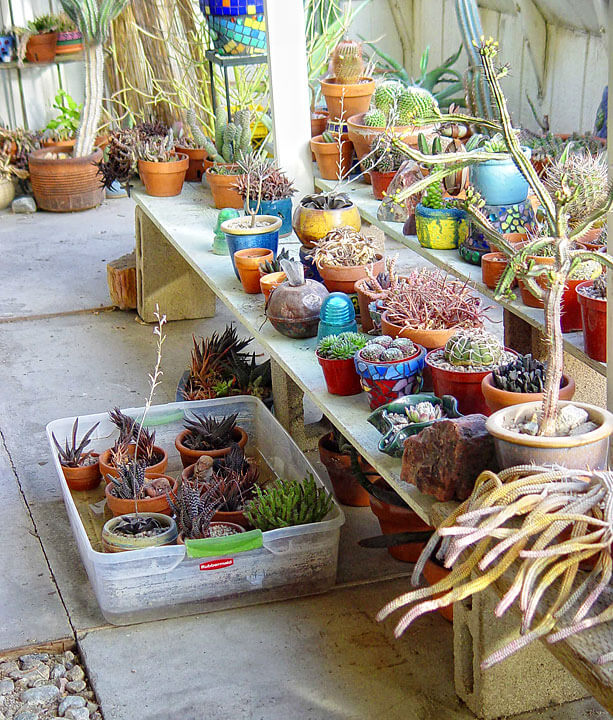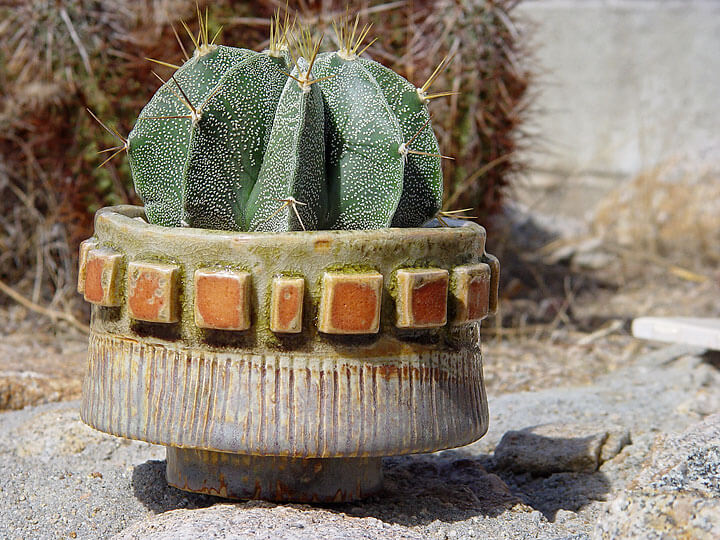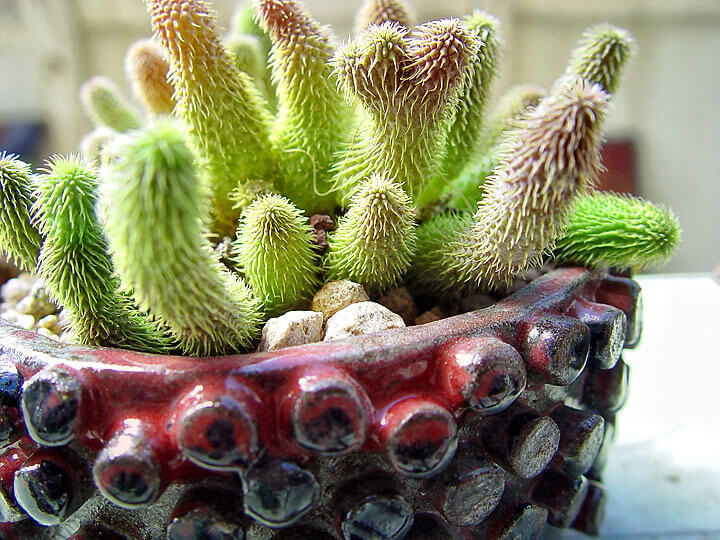If you love Anthropologie stores and the endless displays of ordinary things made extraordinary by grouping them with fresh ideas, then consider ditching your demanding houseplants for easy to grow indoor succulents. These easy fellows are living sculptures that bring color, form and texture into our drab winter days.

The fun of succulents is that they’re so forgiving due to small root zones and very little moisture requirements during the winter. Lining a cute collection up on a windowsill becomes a microcosm of the larger garden during these short, dark days. They are a perfect fit for renters and apartment dwellers who are challenged when it comes to where and how to grow things. Where lanky geraniums once lined these shelves and sills, today it is succulents, the hottest plants of all for indoor design.
Succulent plants remain alive all winter so long as they aren’t exposed to frost. They are small and tidy, making a perfect choice for home, kitchen or office. Key is creating beautiful living sculptures by pairing each succulent with just the right pot. Get this right and the whole becomes greater than the sum of its parts.
Strange and unusual containers are hot. Weird irregular pottery is on fire. Other folks are drilling drain holes in vintage pottery for Mid-century or retro design. Still more are using salvaged industrial items to make a home for succulents.
To get creative with your winter succulents, always begin with the right potting soil blended for these drainage sensitive plants. Black Gold Cactus Mix is fertile yet porous, with generous amounts of sharp sand and perlite to ensure water flows straight through.

Virtually any container will hold a succulent so long as it meets just a few requirements. In general, pots should be wider than they are tall. Deeper pots tend to hold moisture at the bottom below most succulent roots, and there rot can set in. Look for red clay flower pots in shorter “pan” versions, made expressly for these kinds of plants.
Secondly, the pot must be well drained, which relates to the size and number of drain holes. As a fledgling ceramic artist, I create my own stoneware pots. Some feature a single very large hole, just like the design of Japanese bonsai pots. Others have three to five smaller holes to expand the area of drainage overall.
It’s traditional to lay a pot shard over the drain hole of a pot to keep soil from eroding out with each watering. But I’ve found that roots tend to gather around the edges of the shard filling the gaps to inhibit drainage. With my large hole pots, I prefer a square of old window screen, cut it to size and laid over the larger hole before adding soil.
If you’re drilling a container to provide drain holes, multiple smaller holes will allow better drainage than one big one. This provides even drainage over the entire bottom of the pot, not just the one location of the hole. If you are drilling fragile pots that won’t tolerate multiple holes without damage, strive for one very large hole.

In winter these plants respond to limited winter daylight with very slow growth. Moisture needs are minimal. Many cactus are wholly dormant. That’s why winter is when I kill more plants than any other. Moisture won’t evaporate as quickly, so if in doubt about watering, I wait a week, then reevaluate.
Easy to grow indoor succulent gardens are a refreshing alternative to care-intensive houseplants. They offer gorgeous forms with a powerful geometry that becomes the centerpiece of any composition. Best of all, they don’t lose their leaves or beauty while dormant, so their sculptural forms will sit proudly in dim winter light. They’ll carry your decorating through the holidays, into January and with luck, all the way to summer.

